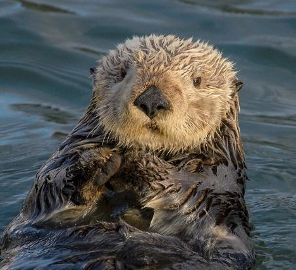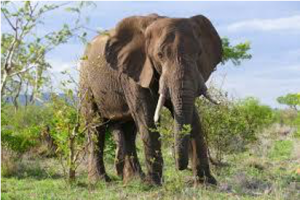By Whitney Bell

Keystone species are like the keystone in a stone archway. The keystone in an archway is responsible for holding all the other stones in place and maintaining the structure, and just like it, keystone species are vital to their ecological communities. Keystone species are plants or animals that are critical for maintaining the biodiversity of the community because they fill an ecological role that no other species can. If the keystone species is removed, the structure and composition of the community is in danger of collapse – just like how removing the keystone from an archway can cause the archway to fall.
A community where biological organisms interact with each other and their physical environment is known as an ecosystem. While many people think so, keystone species aren’t always the most abundant species or the top predators in an ecosystem. For example, aspen trees in boreal forests are considered a keystone species because they provide habitats for so many types of lichen, fungi, birds, and insects in a cold and unforgiving environment.
Another great example of a keystone species is the sea otter, which is native to the northwestern Pacific ocean. While most of us wouldn’t attempt to eat a spiny sea urchin, sea otters find them delicious and consume great quantities of them. The sea otters’ predation keeps the sea urchin population from growing too abundant. This is important because sea urchins eat kelp, a type of brown algae that we sometimes call a seaweed. Certain types of kelp can grow up to 200 feet in length! Towering kelp create “kelp forests” that serve as a habitat, food source, and hunting ground for numerous other aquatic animals. If the sea urchin population grows too large, the urchins eat too much of the kelp which devastates the kelp forest ecosystem. Thus, by controlling the sea urchin population and preventing the loss of the kelp forests, sea otters protect and balance their marine environment.
Keystone species come in many shapes and sizes and include sea stars, beavers, corals, cacti, and more. Regarding size, the African elephant is one of largest! In addition to being considered a keystone species, the African elephant is also considered an “ecosystem engineer”. The ecosystem engineer is a species that creates or shapes its environment (think of the beaver, another example of a keystone species and ecosystem engineer). On the savannas and in tropical forests, African elephants consume large quantities of grasses and other vegetation which controls plant growth and also creates open spaces in the landscape. In these bare spaces, smaller plant species that might have been outcompeted have a chance to grow, and they create watering holes and habitats for burrowing animals like mice and shrews that other animals eat. Elephant dung also plays a huge role in spreading the seeds of the plants they eat! Elephants consume, and therefore deposit, thousands of seeds a day as they graze, and this is critical to plant regeneration and ecosystem maintenance. However, these natural engineers are threatened with habitat loss and ivory poachers. Their protection is not only important for biodiversity but also for the entire ecosystems they help create!
Look outside your window and see what plants and animals are present. While they might not be keystone species, think about how removal or overgrowth of those populations might impact your surroundings!
Edited by Alec Chaves and Alan Curtis



